Gunpowder Magazine
This week: Potting on; The internet as a force for good; Excluding damp; In the mix; Next steps; Orchard walls; Looking back;

The internet is a very strange place at times.
I find that there is a constant battle (mostly it is automated) to stop people trying to gain access to the domain and the server where this blog is hosted. They want access so they can use my bandwidth for their nefarious activities.
Something else which goes on, which is not automatic, is the moderation of comments.
At the end of every blog is a space where readers can contribute with an observation, comment or advice. What you don’t see are the comments which do not make the “Directors cut”.
I am finding that every day there are anywhere between three and twenty unwanted and irrelevant “comments”.
These can be links for prescription medication – and not for the felines – or for porn sites, or other links which I can’t identify and am not even going to try to look at.
What I have been doing this week is to turn off commenting on back issues. This is just in case one of these illicit comments gets through the defences and is then read.
I know it’s unlikely, but I also know there are younger readers of the blog. So I will not take the risk.
From this issue of my Blog, I will leave the comments box available for a few days after publication and will then turn it off.
It will not affect you, my nice, respectable, regular readers who generally comment on the day or day after publication. However it should save the wrong sort of comment from ever appearing.
Potting on
From my past experience I have found that cuttings that I have propagated tend to grow a lot better if I pot them on and grow them in a nursery area before planting them out into the final positions.
That does of course require that I have final positions for them, which in the case of the boundary borders, I am still in the process of constructing.
So I have a few things which should probably have been planted last year, but will go into the ground this autumn.
Rain is far better than anything that flows from a watering can, and with showers forecast for the week, on Sunday I was pottering and potting.
I mix my own potting compost, but I don’t have any set recipes.
Three, two one is simply three handfulls’ of soil, two of compost and one of sand with some bonemeal thrown in for good measure.
Some plants and shrubs like a gritty and free draining soil, others like a lot of vegetable matter to retain moisture. So depending what it is that I am planting, I mix what I think in a bucket.
Here I must offer a confession – that I don’t sterilise my plant pots.
I know it is recommended practice, but I worry about putting more chemicals into the environment.
However I do look for the big bugs when I am potting, especially if I am using soil from the compost heap.
In previous blogs I have discussed many times the dearth of worms here, but where you have a lack of one organism, there tends to be a local alternative.
Here we have the green Rose Chafer, Cetania aurata.
This large insect lays its eggs on rotting vegetation and the grubs spend their entire twelve month pupa stage feeding on decaying matter and turning it into usable humus.

The grubs are large, unmistakable, ugly and blind. However whenever I come across one, I put it into one of my compost heaps.
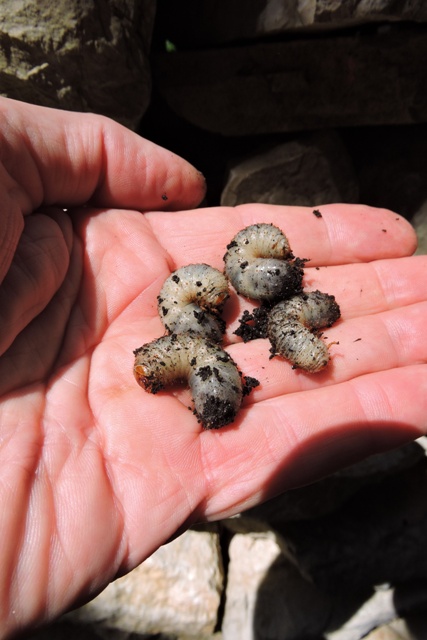
The adults are noisy flyers and are not good navigators. Their ungainly flight means they bump into things (and people).
Once they are on their backs, they struggle to right themselves. But when you spot one in the sunshine, it’s iridescent green carapace is fantastic to see.
The internet as a force for good
In my introduction I mentioned some website admin problems that I face every day, but what I must also mention is how useful the internet actually is for doing some serious research.
I run a couple of police history FaceBook groups, for people interested in police motorcycles, badges and general history. I recently had a request for information about the North Riding Constabulary in the 1890’s from a film company making a documentary.
They wanted accurate information about the uniforms of the time. It turned out they were also interested in the London Metropolitan Police. The North Riding was relatively easy, but I needed more information about where in London.
I’m pleased I asked because it turned out it is an area in Essex, but which is now part of the Metropolitan Police District.
There are some fascinating Ordnance Survey maps available on line at the National Library of Scotland.
A quick check showed, together with the Police Almanac, that in the years of their interest, Purfleet was a tiny Essex hamlet, without even a police house, built around an extensive army barracks.
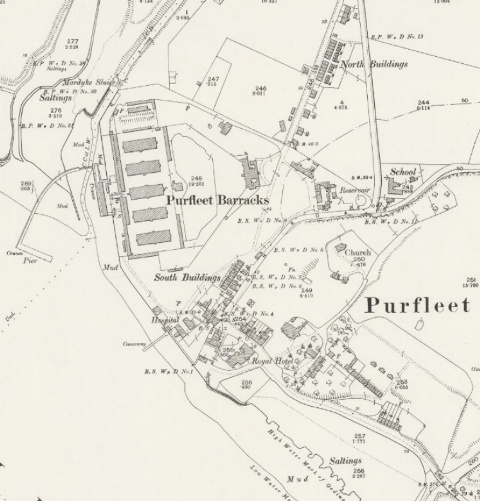
As I come from ‘Norf of Watfud’ I asked for help and received several replies from colleagues, including two beautiful studio photos of Essex Constabulary officers.
Just what the props department was looking for.

As I delved a little deeper, I went through a Police Almanac from the period and discovered that the barracks shown on the map, was actually an Admiralty facility, called the Purfleet Powder Magazine. This was where all the gunpowder for the Royal Navy had been stored from the 18th century, for close to 150 years.
As is often the case with military facilities, their purpose is not revealed on maps, in case it would help the “enemy”.
By historical accident, until 1949 the Metropolitan Police had been responsible for security at all Admiralty facilities and had had detachments of police based all over the country, including Purfleet.
I contacted the company and it turns out that the film has nothing to do with the military facility, so I was back with the Essex Constabulary. But in the interests of historical accuracy, it was a very interesting rabbit hole to go down.
Maybe I should also point out, that I spent almost a day down the rabbit hole, exploring lots of dead end tunnels, before I emerged back out into the daylight of Dol.
Then people ask, “What do you actually do all day?
Excluding damp
The next stage of the Konoba refurbishment was finished on Wednesday.
Bright and early Vlado and Želko arrived, together with assorted amounts of equipment to lay the top layer of concrete on the Konoba floor.
Depending where in the world you live, there are differing methods of preventing damp rising inside building. It’s all a matter of Capillary Motion, or to be more precise Intermolecular forces.
You probably see it, without necessarily understanding what is happening, when you dip a paintbrush into a paint tin.
Despite only dipping the end of the brush, paint always migrates up the bristles to the handle, despite the force of gravity. That is capillary motion in action.
The first house I every bought, which had been built in the early 20th century, had no damp proofing. Small pools of water used to form in dips on a solid floor.
With solid walls, albeit not as solid as the walls of my Dol house, the house received an Injection Damp Proofing where sealant is injected at high pressure directly into the walls above ground level. Capillary Motian spreads the sealant in a layer through the wall.
The damp proofing worked, but the solid floors had to be lifted, removed and a layer of Visqueen DPM laid before a new floor was constructed.
So I have some familiarity with damp proofing, especially having lived in Spain, where like here, there is none.
The builders laid a layer of polythene sheeting over the bitumen layer that had been bonded to the concrete.
Next came a 5 cm layer of block polystyrene, followed by another layer of polythene sheeting.
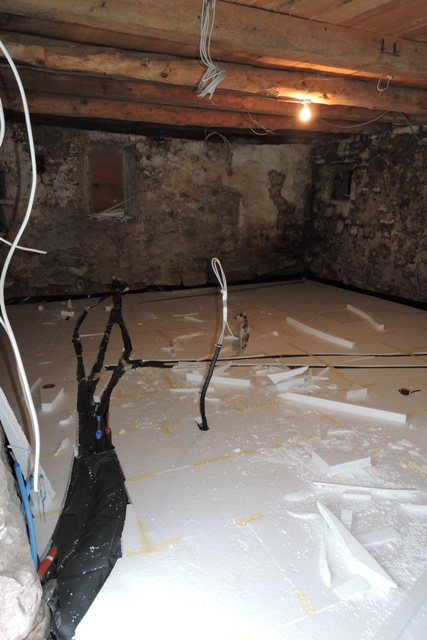
The central heating pipes and electrical conduits were laid between the polystyrene. I then took photographs with a tape measure so I know exactly where the pipe runs are, just in case….
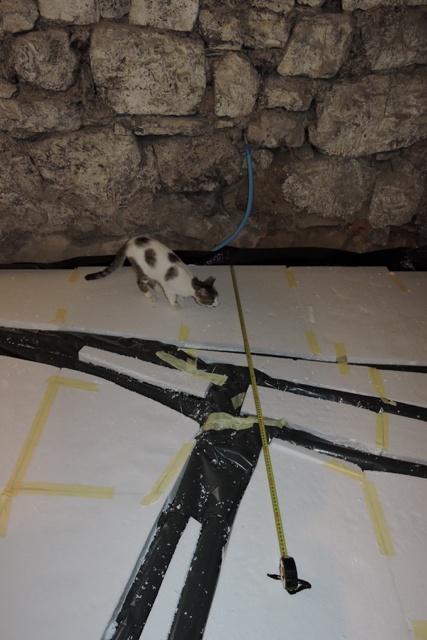
In the mix
Finally, when all the preparations work had been finished, we started mixing concrete after lunch.
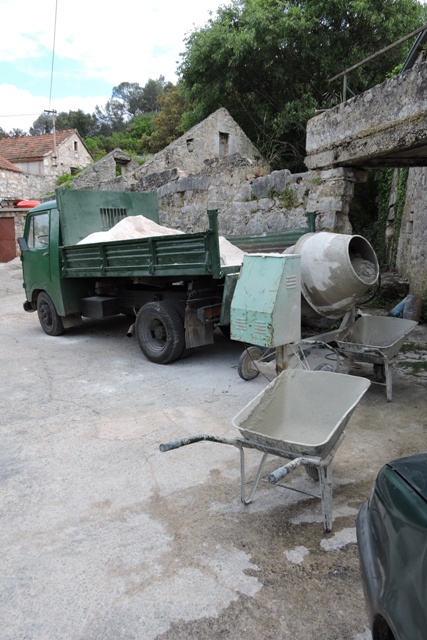
This again was an unusual mix, being what is called here “Nula” or the finest grade of ground limestone usually used to make mortar. But instead of sand, fibreglass fibres were added to the concrete mixer.
The handful of glass fibres was added to the water, to soak before going in the mixer. This kind of concrete is known as GRC and is used a lot here.
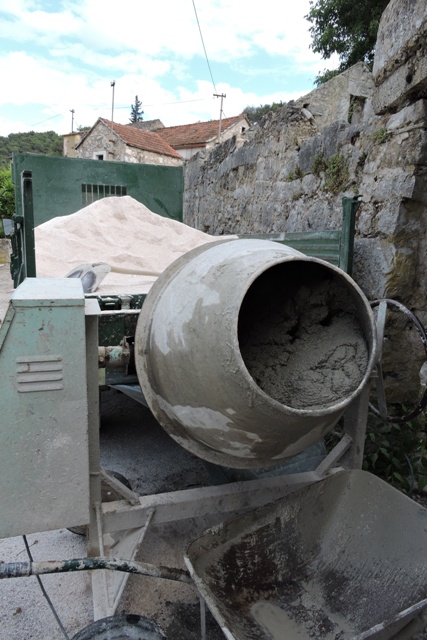
Adding the fibres strengthens the finished concrete, allows the material to be easily worked and prevents cracking.
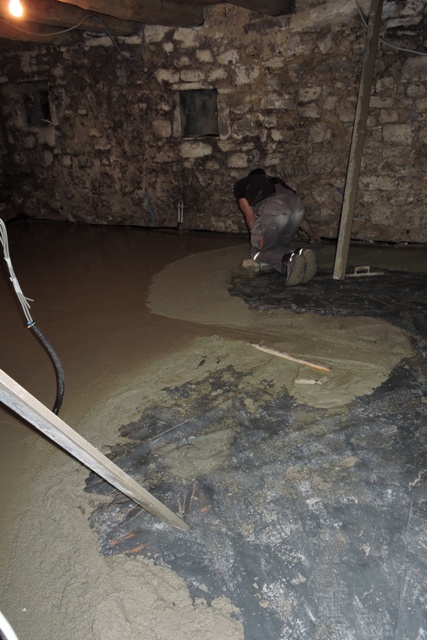
The floor was all finished by tea time and I blocked access so the felines didn’t leave paw prints everywhere on the lovely smooth surface.
On Thursday morning, the new floor had set, although because of the polystyrene, it sounds a little hollow when you walk on it.
I have been watering the new floor, so that the concrete doesn’t cure too quickly in the heat, and crack.
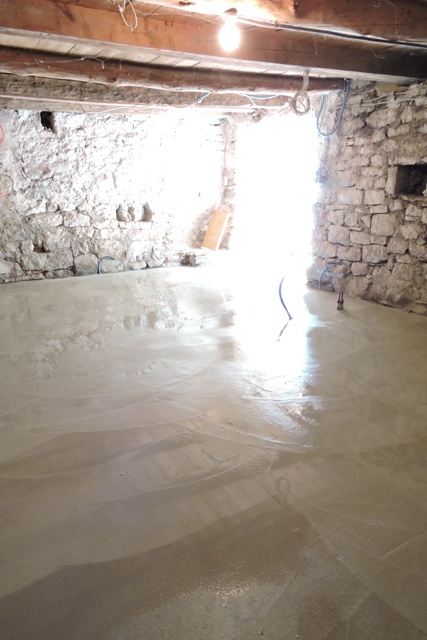
With sunlight streaming through the doorway onto the wet surface and then reflecting into the room, it gives an idea of how the light will be distributed by large, highly glazed floor tiles.
At least this first stage of the refurbishment project is finished.
Next steps
Vlado had a look at the area that I cleaned on the outside wall. This was to see how we might deal with the damp coming through, because of the high soil level outside.
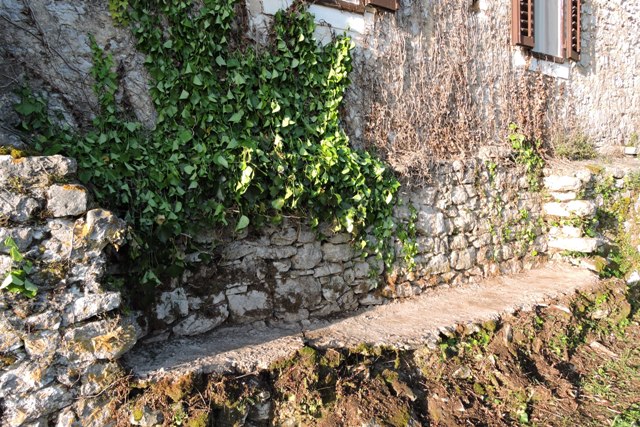
His preferred option is to carry out an an exploratory operation.
This would require the removal the original wall. Then digging down to see just what is underneath the soil, and then sealing the outside against damp penetrating.
Next week is going to be a really messy week. I’m not quite sure just how messy, but it’s going to be messy!
I have found a local company who sandblast stonework to clean it.
The stone walls with well over 100 years of accumulated debris, limewash and damp in the corners, definitely need cleaning.
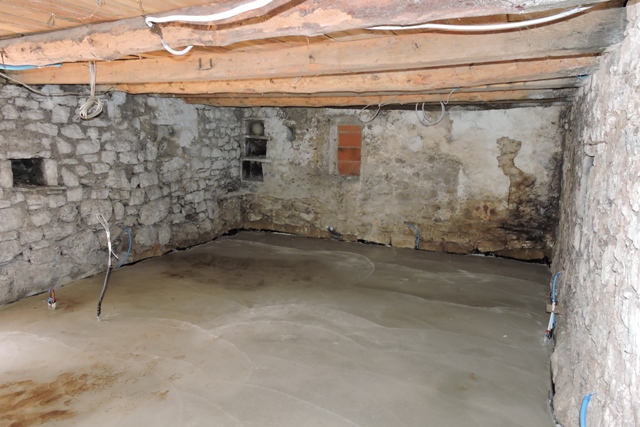
When I say “sandblast” most people will understand what the process is.
Compressed air is used to force particles against the walls. The particles can be different grades of silica sand, glass beads or even baking soda, all depending on the surface being cleaned.
Until the workmen actually start, I am not sure exactly what material they will be using to clean the walls. So I will report back next week.
I have to trust them that they will use the right material for the type of stone. A material that cleans the layers of grime off, but without damaging the fabric.
Once that is done, the remaining mortar will be removed and everywhere will be pointed with brand new mortar, in a colour to match the stones. This contractor is an expert at cleaning and re-mortaring.
The more I look at the stones, the nicer I think they are. When I compare some of the walls on my buildings, which were more random rubble than stone, the walls here are exceptionally pleasing to look at.
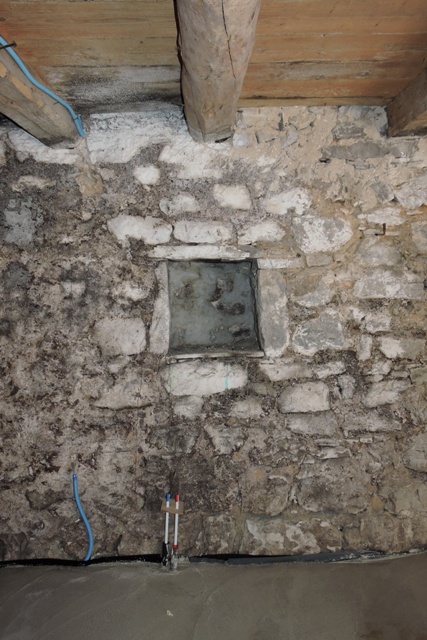
On Saturday morning I could be found moving the electric cables for the sockets and single centre light bulb, so nothing will impede the workmen.
The new electrical ring main, together with lighting inside the niches will all be buried out of sight – but well mapped – in the walls before the final re-mortaring is carried out. So all the services will be hidden except the central heating pipes.
There is then the small matter of laying the floor tiles and building the staircase to link the upstairs with the downstairs. But I am getting way ahead of myself here…
First things first, so next week we will be scouring the walls of years of accumulated grime. Watch this space!
Orchard walls
My attention this week hasn’t only been on the Konoba.
As the weather has grown warmer I have also been busy in the Top Orchard.
Right at the end where the boundary sits with the neighbouring plot, I laid some concrete foundations last year. I also bought 25 cm concrete blocks, with the intention of building a retaining wall.
The blocks have sat at the end of the orchard, waiting for the few spare hours needed to build the actual wall on the foundations.
Because of the slope, when I laid the concrete foundations, I also drove in steel reinforcing bars deep into the soil below.
The top 30 cm of the bars were left protruding through the concrete, so they will actually bond with the mortar for the walls as well, strengthening the whole structure.
This week I’ve done it.
Previously I have always been able to find a good excuse; too hot, too cold, too wet, too dry, no cement etc. As the planets were favourably aligned this week, I’ve got the job finished.
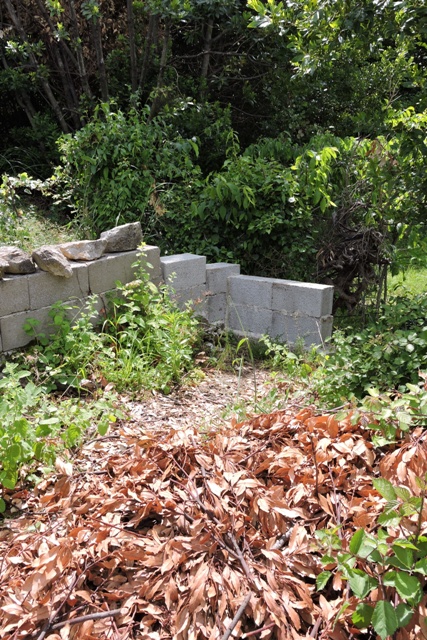
This end of the orchard falls steeply away. It has been where I have stored some logs, together with a lot of cuttings which need to be mulched.
It’s part of another one of those nine square Klotski puzzles.
I need to finish digging out the path around the new workshop, but to do that I first need somewhere to put the soil that I recover.
To keep the soil in place, I needed a retaining wall at the end of the orchard to be built first.
With the soil dug out and the hardcore laid for the path, then I can easily bring the big mulching machine down into the orchard.
Then once the offcuts have all been chopped up, I can use the mulch as weed suppressant around the trees.
So distilling all of that down, building the retaining wall was really the prerequisite task.
With that out of the way, I can start on some of the other jobs which need doing.
Even as time goes on and I finish jobs, there are always more on my list of things to do. NCG
Looking back – Week 20
This section has links to past issues of the blog from this week in history.
2015/20 Pencil thickness beams and Super-size Meccano
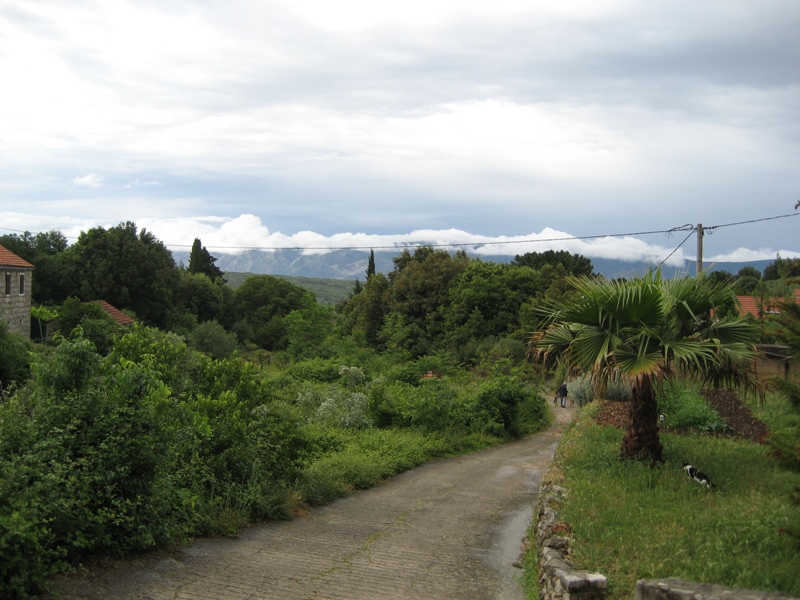
2016/20 They’re Back!
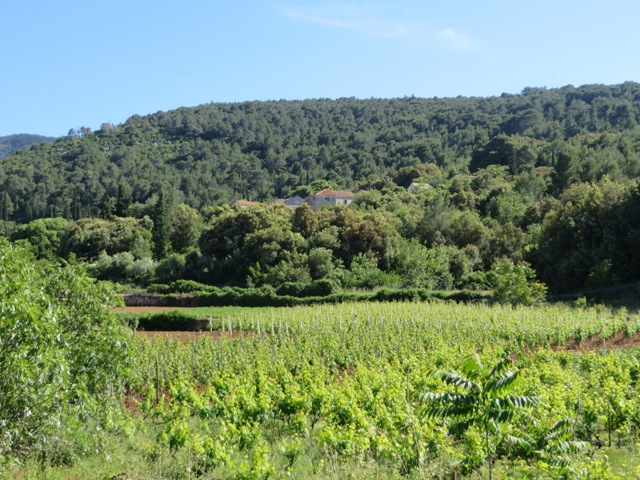
2017/20 Building gates and fences for the ceiling
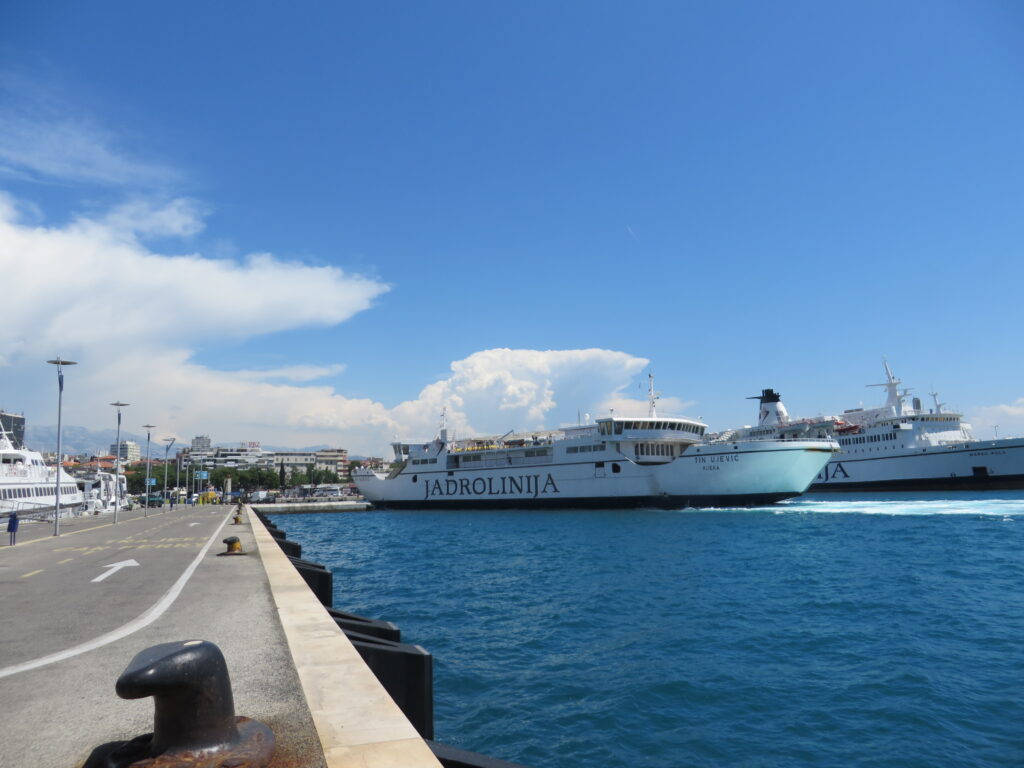
2018/20 IKEA Hacks

2019/20 Tornado warning
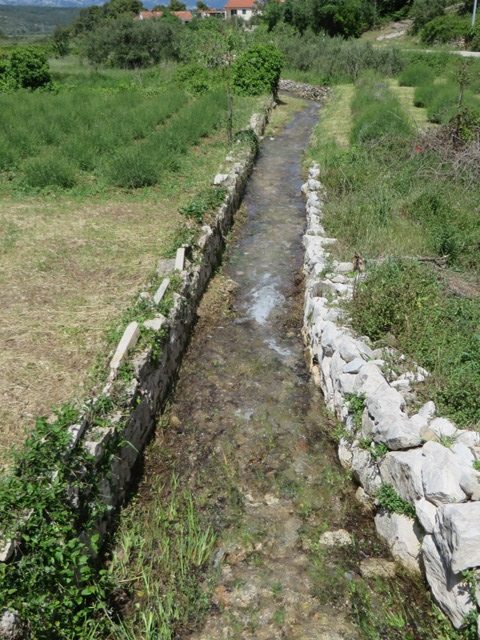
2020/20 Live and let live

3 Responses
Michael Charlton-Weedy
Norman,
thank you. In relation to the documentary, you might be interested to know that my great grandfather, Senior Constable James Weedy, was one of the earliest members of the North Yorkshire force. Moreover, he was murdered on duty on 19th September 1890, shot in Leeming by Robert Kitching, who was subsequently hanged for the offence. He is thereby one of the earliest entries in the police national commemoration by the Mall in London. The Northern Echo ran two double-page articles on the story in 2018. Unfortunately their website article appears unstable: https://www.thenorthernecho.co.uk/history/16299960.shock-murder-bedale-policeman-deeply-moving-last-words-condemned-man/
Alan Wheeler
What you’re doing looks great, and like many hobbies will never really be finished. Good thing you have those four footed building inspectors to help. Here in Arizona we have a bug that looks similar to the Green Rose Chafer but it is called a Japanese beetle. Several years ago they decided our Peach tree was a nice place to settle. No peaches that year and not a lot of leaves left when they were done. I still find their hard cocoons on the cement block fence.
Elizabeth Blackledge
Hi Norman,
I understand your need to remove the ivy but I disagree with your comments about how bad it is. An ivy covered wall is lovely and has many benefits – it can help insulate a wall, preventing internal damp from condensation in winter and excessive heat in summer. It provides a wonderful roosting/nesting location for birds and insects and, when it is large enough, flowers and fruit at a time of the year when not much else is available (in the UK and other northern latitudes at least). Historic England have even decided that it isn’t that bad on the remains of old buildings – often protecting them from the ravages of environment and time. The caveat is, of course, that the walls need to be sound. Once yours are sound and repaired, might you consider letting the ivy return?
Great reading what you have been up to, as always. Stay safe and well.